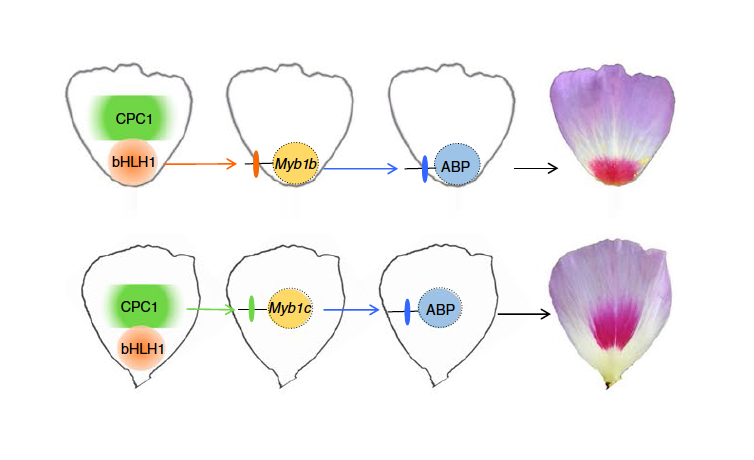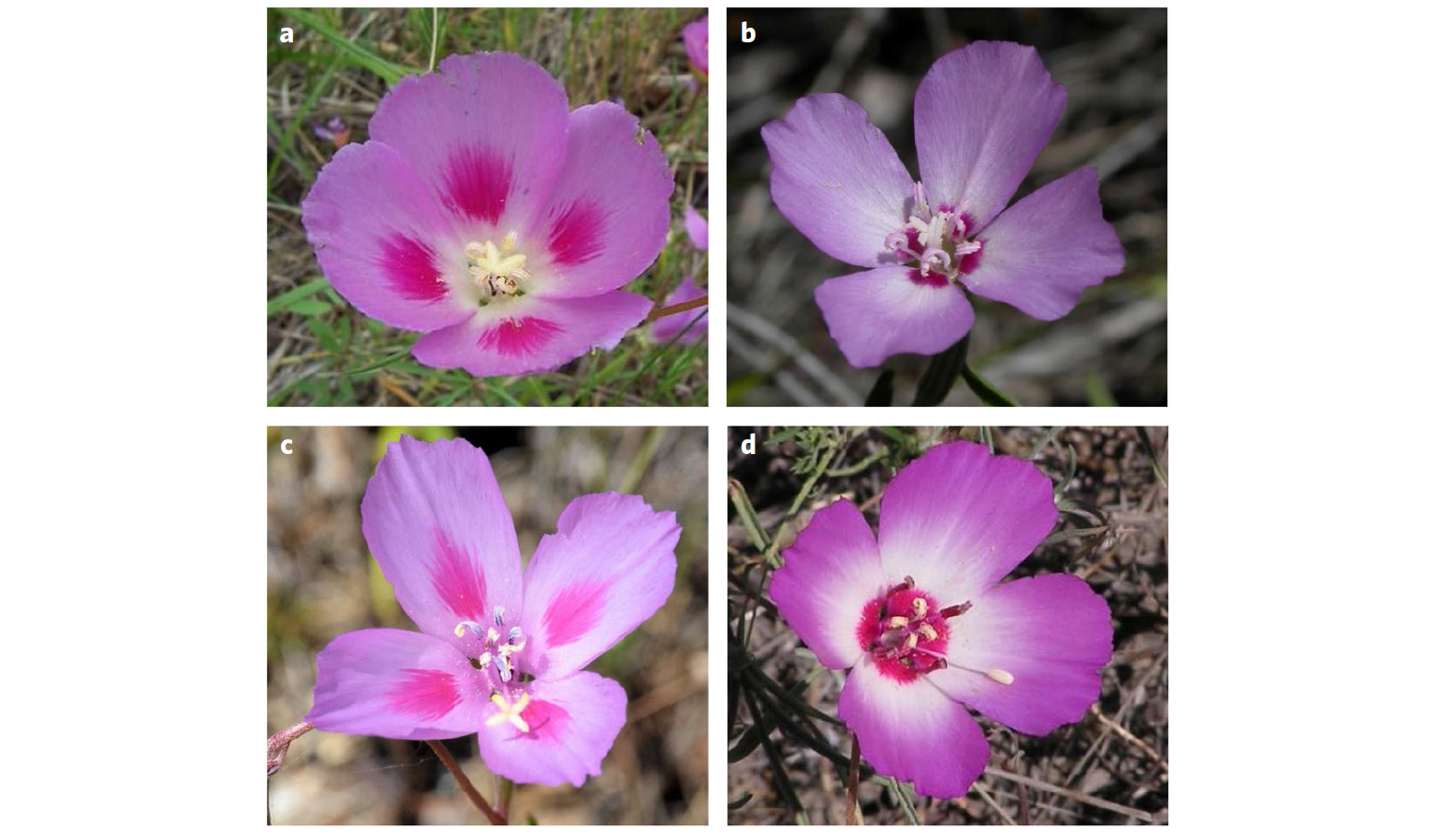博文
Nature Plants:顺式调控元件遗传变异引起山字草花斑位置的改变
||
Two genetic changes in cis-regulatory elements caused evolution of petal spot position in Clarkia
A major premise (前提) in evolutionary developmental biology is that regulatory changes, often involving cis-regulatory elements, are responsible for much morphological evolution. This premise is supported by recent investigations of animal development, but information is just beginning to accumulate regarding whether it also applies to the evolution of plant morphology. Here, we identify the genetic differences between species in the genus Clarkia (山字草) that are responsible for evolutionary change in an ecologically important element of floral colour patterns: spot (斑点) position. The evolutionary shift in spot position was due to two simple genetic changes that resulted in the appearance of a transcription factor binding site mutation in the R2R3 Myb gene that changes spot formation. These genetic changes caused R2R3 Myb to be activated by a different transcription factor that is expressed in a different position in the petal. These results suggest that the regulatory rewiring (重新布线) paradigm (范式) is as applicable to (适用于) plants as it is to animals, and support the hypothesis that cis-regulatory changes may often play a role in plant morphological evolution.
演化发育生物学的一个主要的前提就是调控序列改变,经常会涉及顺式调控元件,这最终会导致生物形态的演化。最近的一些动物发育学方面的研究很好的支持了这个大前提,然而对于植物来说,一切才刚刚开始。本文鉴定了山字草属物种间的遗传差异,该差异会影响生态上一个非常重要的形状,即花颜色模式之一花斑位置的演化改变。花斑位置的改变源于两个非常简单的遗传上的变化,而这种变化会改变影响花斑形成基因R2R3 Myb上转录因子结合位点的突变。这些遗传上的变化导致了R2R3 Myb基因在花瓣上一个不同的位置被一个新的转录因子所激活。本文的结果显示了植物跟动物一样适用于调控序列变异影响形态的演化,同时顺式调控元件的改变对于植物形态的演化具有非常重要的作用。
(山字草属大多数物种的花斑落于花瓣的基部位置,但愉悦山字草Clarkia amoena的花斑落于花瓣的中部位置,作者将其与一个花斑处于花瓣基部位置的物种进行杂交,得到四倍体的杂种C. gracilis,且该种存在连续的变异,不同亚种花瓣上花斑的位置不同,因此这个群体是一个非常理想的研究群体。)
通讯:Peng Jiang (http://people.duke.edu/~mrausher/page3.html)
研究方向:花模式和花颜色演化。
个人简介:1978年,芝加哥大学,学士;1978年,康奈尔大学,博士。
doi: 10.1038/s41477-017-0085-6
https://blog.sciencenet.cn/blog-3158122-1094442.html
上一篇:J EXP BOT:自噬参与大麦小孢子胚胎发生过程中的细胞死亡
下一篇:New Phytologist:早期植物从水生向陆生演化大事件
全部作者的其他最新博文
- • Plant Physiology:CsMADS3促进柑果中的叶绿素降解和类胡萝卜素合成(华中农业大学)
- • Molecular Plant:LBD11-ROS反馈调节作用于拟南芥的维管形成层增殖和次生生长(浦项科技大学)
- • Science Advances:根结线虫通过调控植物的CLE3-CLV1模块,促进侵染进程(日本熊本大学)
- • Nature Communications:油菜素内酯参与植物营养生长期转变的分子机制解析(浙江农林大学)
- • Current Biology:光合作用产生的蔗糖驱动侧根“生物钟”(德国弗莱堡大学)
- • PNAS:花同源异型基因在叶中被抑制、花中被激活的分子机制(南卡罗来纳大学)



